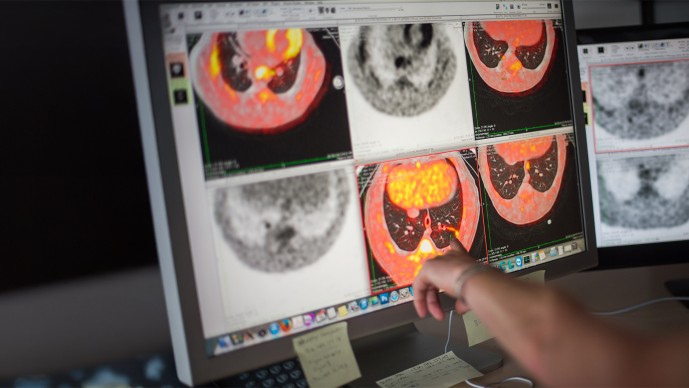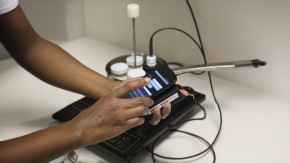
Every first-grader knows what happens when you assume. That's why medical researchers try not to assume anything at all: if they start in the wrong place, they're less likely to come up with the right answer. But occasionally, an unquestioned assumption slips by even the most diligent scientists. Dr. Kyu Rhee, an Associate Professor of Medicine at Weill Cornell Medical Center, noticed one that had guided scientists for decades and decided to pursue it. What he discovered has fundamentally changed the way we develop drugs to treat tuberculosis.
For most bacterial infections - E. coli, pneumonia, and so on - antibiotics are an effective treatment: a couple weeks of penicillin, and you're back to normal. The tuberculosis bacterium, Mycobacterium tuberculosis (Mtb), however, is notoriously different. It doesn't respond to traditional antibiotics, and the drugs it does respond to, invented for the most part in the 40s and 50s, take six months to rid your system of the disease, even though your TB symptoms disappear after a few weeks. A lot of patients, understandably, don't see the point in taking a drug with unpleasant side effects for months after they no longer have TB symptoms, so they don't finish the full course of medication - which helps the bacterium grow resistant to the drugs. TB is already a leading cause of death in poor countries - almost two million people die from it every year - and increasing resistance makes developing new drugs to treat it even more vital.
But those who are working to do so keep running into that notorious difference. Mtb has a very tough outer shell, and for decades, people thought that that was the main thing that made it so hard to fight - essentially, they thought that Mtb was like E. coli and other bacteria, but wearing a bullet-proof vest. Dr. Rhee, though, when it occurred to him that the question had never been fully investigated, started wondering whether researchers were on the wrong track. He decided to find out using a 2008 Grand Challenges Explorations grant to understand how the TB bacterium can hide inside people without giving them any symptoms. He analyzed Mtb using a technique called mass spectrometry, which allows researchers to measure chemical composition and structure very precisely; what he discovered was that inside the tough shell lay an organism very different from other bacteria.
Human beings are Mtb's primary host. The bacterium evolved before most other bacteria, tens of thousands of years ago, to live inside people, which means that it has had a lot more time to get to know us than almost any other bacteria - and a lot more time to build defenses. As a result, Dr. Rhee discovered, Mtb has a much more sophisticated internal structure than other bacteria; the function of one part of this structure is just like the function of the human liver: to process and neutralize poisons that enter the system. In other words, Mtb has evolved the ability to eat antibiotics and other drugs. If you try to treat it with penicillin, it finishes the drug off and asks for dessert. No wonder regular antibiotics come up short.
But Dr. Rhee's discoveries don't just explain how tuberculosis is different from other bacteria. They also give us an incredibly powerful new way to find drugs that kill or neutralize it. When scientists thought Mtb was just like other bacteria, research on anti-TB drugs was in a way a matter of trial and error. Now that we know more about what the parasite looks like on the inside, though, we have a lot more avenues to explore. Maybe there's a compound that could neutralize Mtb's "liver" and make it vulnerable to regular antibiotics. Or maybe two different drugs could affect two different parts of the bacterium without which tuberculosis can't survive. The possibilities aren't quite endless, but knowing that this sophisticated structure exists gives us a lot more places to search for vulnerabilities.
Now that he knows a lot more about what he's looking at, Dr. Rhee has turned to figuring out how that internal structure works. And, of course, there's still that incredibly hard outer shell. But in the meantime, his work is already bearing fruit: one promising strategy, for example, is to develop a new drug candidate that makes a compound toxic only after the bacterium has metabolized it. With the help of Dr. Rhee's work, researchers will be able to figure out why - and, with luck, how to turn it into a drug that could make life a lot better for a lot of people.



